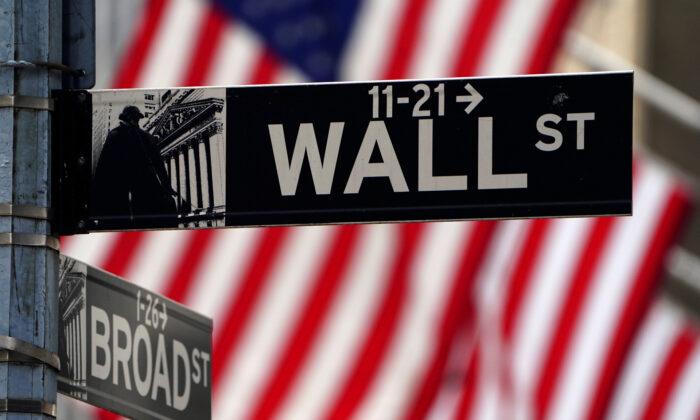Wall Street is split on the U.S. economy possibly facing the threat of stagflation in the post-pandemic recovery.
Bank of America Global Research recently declared that “stagflation is here,” while Jean Boivin, head of the BlackRock Investment Institute, expects growth to accelerate as tighter inventories ease.
Market analysts are combing through the data to determine the trajectory of the U.S. economy over the next 12 months.

A Look at the Latest Numbers
The IHS Markit manufacturing purchasing managers’ index (PMI) declined to 58.4 in October, from 60.7 in September—anything above 50 indicates expansion. The reading fell short of market estimates of 59.2.According to the U.S. Census Bureau, construction spending tumbled 0.5 percent in September, the first monthly contraction since February. In addition, spending on manufacturing, utilities, health care, and public construction fell from August.
This comes after the Bureau of Economic Analysis (BEA) confirmed that the gross domestic product expanded at an annualized rate of 2 percent in the third quarter, below economists’ projections of 2.7 percent. This was also down from the 6.7 percent growth in the second quarter.
What Does the Market See Ahead?
Goldman Sachs recently slashed its U.S. gross domestic product growth targets to 5.6 percent for 2021 and 4 percent for 2022, down from previous estimates of 5.7 percent and 4.4 percent, respectively.The financial institution also cut its quarterly economic growth projections: 4.5 percent in the fourth quarter of 2021 and the first quarter of 2022, 4 percent in the second quarter, and 3 percent in the third quarter. However, Goldman Sachs analysts raised their fourth-quarter forecast to 1.75 percent.
But not everyone is worried, with some economists calling for growth to “re-accelerate” in the October-to-December period.
“Inflation is a process and not a one-time change in the level of prices, which I think is what we’re seeing right now,” he said. “We’re seeing an adjustment to new temporary realities on the supply side but we’re not seeing the stagflation process that we saw in the 1970s recurring again.”
Others say that the broader slowdown in the economy will subside, although inflationary pressures could persist.
Chief Threats to the Economy
What could be the top risks to the U.S. economy?Be it overloaded transportation networks or labor shortages at notable ports, there are many factors that pose new threats, Bloomberg noted. Because this could lead to prolonged inflation, the Federal Reserve and other central banks could be forced to pull the trigger on earlier-than-expected higher interest rates. This monetary policy tightening to fight higher prices, strategists purport, could threaten the economy and record-high equity and real estate values.
“If the Fed reacts too strongly to thwart inflation, we could see damage to GDP and higher unemployment,” Kevin Rich, a consultant to Perth Mint, told The Epoch Times. “If the Fed doesn’t react strongly enough then we probably see inflation move higher and stay longer. The Fed is in a tough position, to say the least.”
Another critical “negative for growth” risk might be soaring global economy prices, especially as the Northern Hemisphere heads into winter.
“I think you'd be at your peril to basically underplay the stagflation risk,” Piron said. “The squeeze higher in inflation is not necessarily all due to demand. It’s due as well to supply-side, supply-chain constraints. That is negative for growth.”
White House Expects ‘Solid’ Recovery
Treasury Secretary Janet Yellen championed her confidence in the post-pandemic recovery in an interview with Bloomberg News on Oct. 31.“I think what we’re going to see is a good, solid recovery. The unemployment rate has gone down considerably, and this is nothing like the recovery from the 2008 financial crisis,” she said.
Yellen added that President Joe Biden’s Build Back Better agenda could further support the economic rebound as the various mechanisms, such as child care subsidies and universal pre-K, could support “long-term potential output.”
The administration also asserts that the new spending proposals could curb inflation and grow the economy.
“The economy is changing, and the United States has to stay ahead of the curve.”





